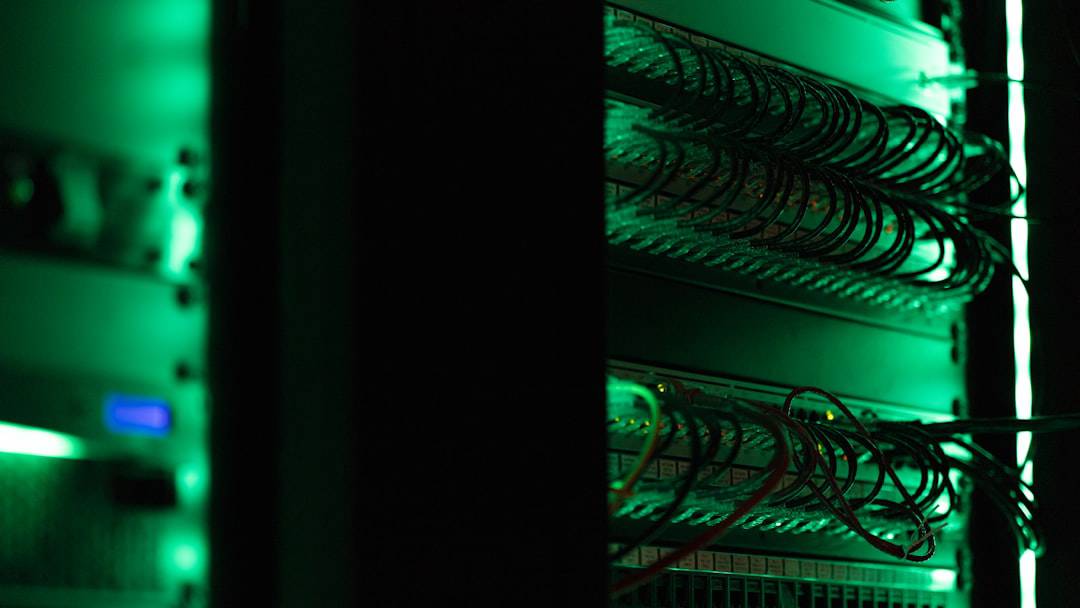MySQL brute force attacks are a common method used by attackers to gain unauthorized access to MySQL servers. This technique involves using automated software to rapidly attempt numerous username and password combinations until a successful login is achieved. Brute force attacks can be particularly effective against servers with weak security measures, especially those with easily guessable passwords.
Once an attacker gains access to a MySQL server through a successful brute force attack, they can potentially steal, modify, or delete sensitive data. Additionally, the compromised server may be used as a launching point for further attacks on other systems. To mitigate the risk of MySQL brute force attacks, several security measures can be implemented:
1.
Strong password policies
2. Two-factor authentication
3. Limited access to the MySQL server
4.
Monitoring and logging of failed login attempts
5. IP whitelisting and blacklisting
Understanding the mechanics of brute force attacks and implementing these preventive measures can significantly reduce the risk of unauthorized access to MySQL servers. By prioritizing server security and data protection, organizations can safeguard their MySQL databases against potential breaches and maintain the integrity of their information systems.
Key Takeaways
- MySQL brute force attacks are a common method used by hackers to gain unauthorized access to a MySQL server by repeatedly trying different password combinations.
- Implementing strong password policies, such as using complex and unique passwords, can help prevent brute force attacks and enhance the security of the MySQL server.
- Using two-factor authentication adds an extra layer of security by requiring users to provide a second form of verification, such as a code sent to their mobile device, in addition to their password.
- Limiting access to the MySQL server by only allowing connections from specific IP addresses or network ranges can help reduce the risk of unauthorized access and potential brute force attacks.
- Monitoring and logging failed login attempts can provide valuable information about potential brute force attacks and help in identifying and mitigating security threats.
- Using IP whitelisting to allow access only from trusted IP addresses and blacklisting suspicious or malicious IP addresses can further enhance the security of the MySQL server.
- Regularly updating and patching MySQL server software is essential to address any known vulnerabilities and ensure that the server is protected against potential security threats.
Implementing Strong Password Policies
One of the most effective ways to protect against MySQL brute force attacks is to implement strong password policies. This means requiring users to create complex passwords that are difficult for hackers to guess or crack. Strong passwords should be at least 12 characters long and include a mix of uppercase and lowercase letters, numbers, and special characters.
It is also important to enforce regular password changes to ensure that compromised passwords are not used indefinitely. In addition to creating strong passwords, it is important to educate users about the importance of password security and provide guidance on how to create and manage strong passwords. This can include training on how to recognize phishing attempts and other social engineering tactics used by hackers to obtain passwords.
By implementing strong password policies and educating users about best practices for password security, you can significantly reduce the risk of unauthorized access to your MySQL server. Implementing strong password policies is an essential step in protecting your MySQL server from brute force attacks. By requiring users to create complex passwords and enforcing regular password changes, you can make it much more difficult for hackers to gain unauthorized access to your server.
Educating users about the importance of password security and providing guidance on best practices for creating and managing strong passwords can further enhance the security of your server and reduce the risk of unauthorized access.
Using Two-Factor Authentication

In addition to implementing strong password policies, using two-factor authentication can provide an extra layer of security against MySQL brute force attacks. Two-factor authentication requires users to provide two forms of identification before they can access the server, typically something they know (such as a password) and something they have (such as a one-time code sent to their mobile device). This makes it much more difficult for hackers to gain unauthorized access, even if they are able to guess or crack a user’s password.
By using two-factor authentication, you can significantly reduce the risk of unauthorized access to your MySQL server. Even if a hacker is able to obtain a user’s password through a brute force attack, they will still need the second form of identification in order to access the server. This provides an additional layer of security that can help to prevent unauthorized access and protect sensitive data.
Using two-factor authentication is an effective way to enhance the security of your MySQL server and protect against brute force attacks. By requiring users to provide two forms of identification before they can access the server, you can make it much more difficult for hackers to gain unauthorized access, even if they are able to guess or crack a user’s password. This extra layer of security can help to prevent unauthorized access and protect sensitive data from being compromised.
Limiting Access to the MySQL Server
| Metrics | Data |
|---|---|
| Number of failed login attempts | 25 |
| Number of blocked IP addresses | 10 |
| Number of successful login attempts | 150 |
| Number of users with access privileges | 50 |
Another important measure for protecting against MySQL brute force attacks is to limit access to the server. This means only allowing authorized users and applications to connect to the server, and restricting access from unknown or untrusted sources. One way to do this is by using IP whitelisting, which allows you to specify which IP addresses are allowed to connect to the server.
By only allowing connections from trusted IP addresses, you can significantly reduce the risk of unauthorized access. In addition to using IP whitelisting, it is also important to regularly review and update user permissions to ensure that only authorized users have access to the server. This includes removing any unnecessary or outdated user accounts, as well as regularly reviewing and updating permissions for existing accounts.
By limiting access to the MySQL server and regularly reviewing user permissions, you can reduce the risk of unauthorized access and protect sensitive data from being compromised. Limiting access to the MySQL server is an important step in protecting against brute force attacks and unauthorized access. By using IP whitelisting and regularly reviewing user permissions, you can significantly reduce the risk of unauthorized access and protect sensitive data from being compromised.
These measures can help to enhance the security of your MySQL server and reduce the likelihood of a successful brute force attack.
Monitoring and Logging Failed Login Attempts
Monitoring and logging failed login attempts is another important measure for protecting against MySQL brute force attacks. By keeping track of unsuccessful login attempts, you can identify potential security threats and take proactive measures to prevent unauthorized access. This can include implementing automated alerts for multiple failed login attempts within a short period of time, as well as regularly reviewing logs for any suspicious activity.
In addition to monitoring failed login attempts, it is also important to investigate any unusual patterns or trends in login activity. This can include looking for repeated failed login attempts from the same IP address or unusual login times outside of normal business hours. By monitoring and logging failed login attempts, you can identify potential security threats and take proactive measures to protect your MySQL server from unauthorized access.
Monitoring and logging failed login attempts is an essential step in protecting against MySQL brute force attacks. By keeping track of unsuccessful login attempts and investigating any unusual patterns or trends in login activity, you can identify potential security threats and take proactive measures to prevent unauthorized access. This can help to enhance the security of your MySQL server and reduce the risk of a successful brute force attack.
Using IP Whitelisting and Blacklisting

In addition to limiting access to the MySQL server, using IP whitelisting and blacklisting can provide an extra layer of security against brute force attacks. IP whitelisting allows you to specify which IP addresses are allowed to connect to the server, while IP blacklisting allows you to block specific IP addresses from accessing the server. By using both whitelisting and blacklisting, you can control which IP addresses are allowed or denied access, providing an additional layer of protection against unauthorized access.
By using IP whitelisting and blacklisting, you can significantly reduce the risk of unauthorized access to your MySQL server. By only allowing connections from trusted IP addresses and blocking specific IP addresses from accessing the server, you can control which sources are allowed or denied access, providing an additional layer of protection against brute force attacks. Using IP whitelisting and blacklisting is an effective way to enhance the security of your MySQL server and protect against brute force attacks.
By controlling which IP addresses are allowed or denied access, you can significantly reduce the risk of unauthorized access and protect sensitive data from being compromised. These measures can help to enhance the security of your MySQL server and reduce the likelihood of a successful brute force attack.
Regularly Updating and Patching MySQL Server Software
Regularly updating and patching MySQL server software is essential for protecting against brute force attacks and other security threats. Software updates often include security patches that address known vulnerabilities and weaknesses that could be exploited by hackers. By regularly updating and patching your MySQL server software, you can ensure that it is equipped with the latest security features and protections against potential threats.
In addition to updating and patching software, it is also important to stay informed about any security advisories or alerts related to MySQL server software. This can include subscribing to security mailing lists or following reputable sources for information about potential security threats or vulnerabilities. By staying informed about potential security threats, you can take proactive measures to protect your MySQL server from unauthorized access.
Regularly updating and patching MySQL server software is an essential step in protecting against brute force attacks and other security threats. By ensuring that your server is equipped with the latest security features and protections, you can reduce the risk of unauthorized access and protect sensitive data from being compromised. Staying informed about potential security threats and taking proactive measures can help enhance the security of your MySQL server and reduce the likelihood of a successful brute force attack.
In conclusion, protecting against MySQL brute force attacks requires a multi-faceted approach that includes implementing strong password policies, using two-factor authentication, limiting access to the server, monitoring failed login attempts, using IP whitelisting and blacklisting, and regularly updating and patching MySQL server software. By understanding how these attacks work and taking proactive measures to prevent them, you can significantly reduce the risk of unauthorized access to your MySQL server. These measures can help enhance the security of your MySQL server and reduce the likelihood of a successful brute force attack.
If you are interested in exploring the concept of parallel worlds and multi-universe theories, you may find the article “Exploring Megaverse: An Introduction to Multi-Universe Concepts” on Metaversum.it to be an intriguing read. This article delves into the fascinating idea of multiple universes coexisting and the implications it may have on our understanding of reality. It’s a thought-provoking piece that will expand your mind and spark your imagination.
FAQs
What is a MySQL brute force attack?
A MySQL brute force attack is a type of cyber attack in which an attacker attempts to gain unauthorized access to a MySQL database by systematically trying different username and password combinations until the correct one is found.
How does a MySQL brute force attack work?
In a MySQL brute force attack, the attacker uses automated tools to repeatedly try different username and password combinations in an attempt to guess the correct credentials and gain access to the database.
What are the potential risks of a MySQL brute force attack?
A successful MySQL brute force attack can result in unauthorized access to sensitive data stored in the database, including personal information, financial records, and other confidential data. This can lead to data theft, data manipulation, and other security breaches.
How can I protect my MySQL database from brute force attacks?
To protect your MySQL database from brute force attacks, you can implement security measures such as using strong, complex passwords, limiting the number of login attempts, and using firewalls and intrusion detection systems to monitor and block suspicious activity.
What should I do if my MySQL database is targeted by a brute force attack?
If you suspect that your MySQL database is being targeted by a brute force attack, you should immediately take steps to secure the database, such as changing the passwords, blocking the attacker’s IP address, and implementing additional security measures to prevent further unauthorized access. You should also report the attack to your organization’s security team or IT department.











Leave a Reply